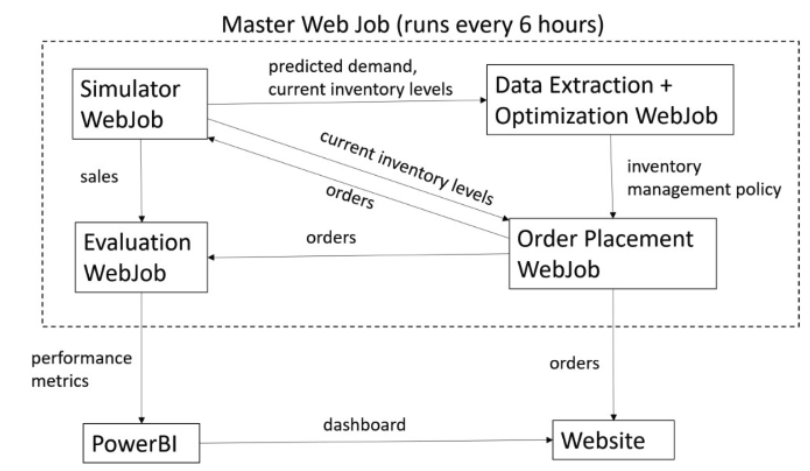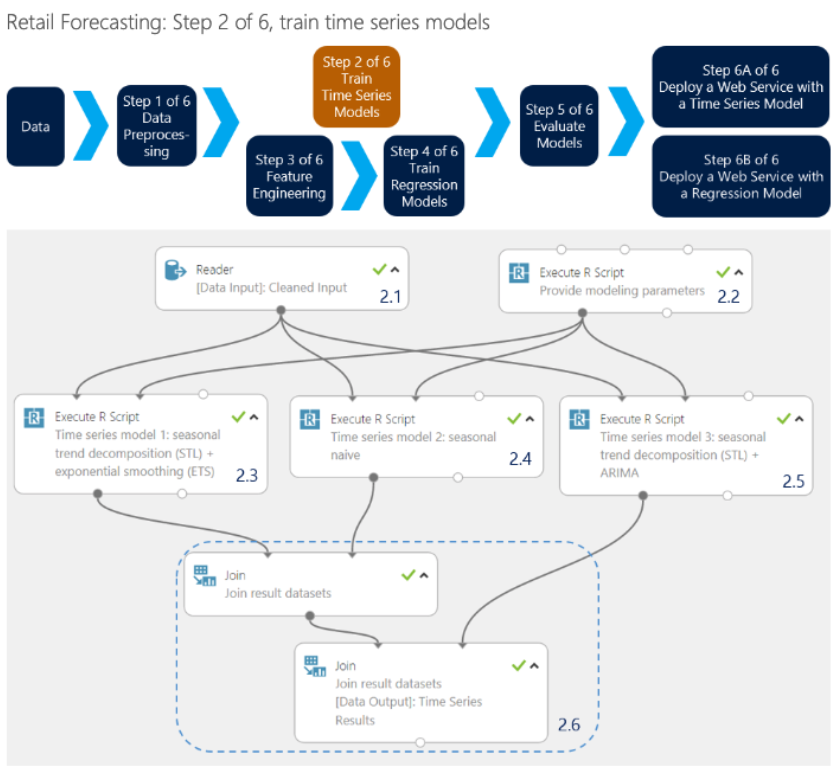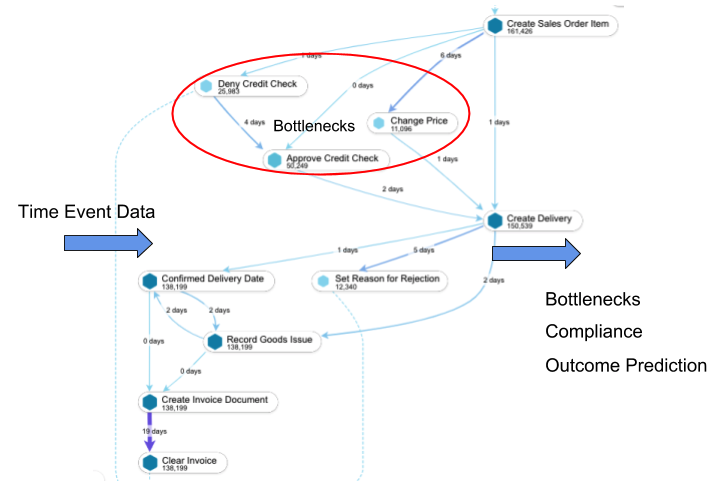
When I reflect on what has changed in the field of Inventory Optimization with the proliferation of Azure and AI, in some ways nothing changed. Except for recent advancements in the field of Process Mining, which made a huge leap in the past few years, the rest of scientific fields, including Demand and Supply Time Series forecasting, Combinatorial Optimization techniques including Integer and Mixed-Integer Programming existed for at least a few decades, if not more.
However, when I reflect on what a small team of three highly trained and motivated professionals can now achieve in a span of 16 to 20 weeks on Azure cloud, Everything Changed!
Computationally speaking, there are 3 core elements for an Inventory Optimization solution. You need:
- Accurate Supply and Demand Forecasting techniques that can be tuned to varying levels of granularity, including time(Eg: Quarterly / Weekly / Daily) and geospatial location (Store or Warehouse / Region / State).
- Constraint based Combinatorial algorithms that can solve scenarios based on specific constraints. Eg: Tomatoes and Eggs have expiry date, stockout rate tolerance, maximum inventory level etc.
- Process Mining algorithms that can reverse engineer as-is processes from Time-Event data coming in from ERP and IoT systems to get end-to-end process overview and identify bottlenecks.
Even a few years ago, provisioning any one these tools in an enterprise took several months, if not more. Specialized skills to install, configure and use each of the tools was a must. As a result, the “Idea to PoC to Production” for even a single experiment iteration was at least 8-12 months, even in some of the most sophisticated companies.
With the proliferation of Cloud and AI, two advancements are worth taking a closer look:
- Managed Services with built-in enterprise grade security. For example, Azure native services like Azure Machine Learning Studio [5] (comes with off the shelf support for Time-Series models) and third party tools like Databricks on Azure [6] come with all the necessary security an enterprise demands. (Eg: via Active Directory). And this literally takes a few clicks in many cases!
- Solutions like Azure AI Gallery [7] (Previously Cortana Intelligence Gallery) take the managed services a step even further by providing end-to-end AI templates for a complete solution vertical.
The solutions available in Azure AI Gallery are worth exploring a little more in detail.
Consider the Inventory Optimization [1] solution that the research team at Microsoft put together.

This is not just a single Managed Service of a single tool. It is an entire end-to-end system that spans from HDInsight for Spark(ML), to BONMIN (Basic Open-Source Nonlinear Mixed Integer Programming) [2] that is provisioned in Azure container service, and even setting Inventory Policy (Eg: Perishability) depending on the specific KPI you want to optimize using Azure Web Job and even reports built on Power BI!

In an ideal world, a company would need to have a team that has years of experience in each of the below fields.
- Data Scientists specializing in Operations Research for Combinatorial/Nonlinear Mixed Integer Programming
- Data Scientists trained in Statistics / Signal processing for Time Series Demand and Supply predictions.
- Machine Learning Engineer for integration on cloud
- Big Data Infrastructure Engineer
- Web Developer for developing the customer facing application.
Even with existing individual Managed Services on Azure, a similar solution would take an army of Data Scientists and Engineers over a year to develop the end-to-end solution considering the complexity of the SQ Inventory Policy [3] that was implemented in the above solution.
However, with the availability of the solutions in Azure AI Gallery, our team was able to replicate the simulation setup in less than a few weeks on Azure, and are now able to customize the solution to fit the needs of the specific customer in 16-20 week experiment iteration cycles!
Other Azure AI gallery solutions worth exploring is the Retail Forecasting solution [4] that use Azure Machine Learning Studio as it’s experimentation backbone and uses several variations of Seasonal Trend Decomposition using Loess + AutoRegressive Integrated Moving Average (ARIMA).

Another often overlooked methodology is getting end-to-end process overview and where the bottlenecks in the system are to optimize the overall cash-to-cash cycle times using Process Mining.
Every process generates time event data. Consider the example of tracking an order from the time it is received to the moment it was delivered. At each stage in the entire process, an event (activity) is generated. Each activity has a unique time stamp.
Process Mining is a relatively new field in Data Science that automatically reconstructs (reverse engineers) the underlying process just by looking at the time series event data! It is then possible to identify bottlenecks as well as compliance violations.

So, what’s stopping Enterprises to leverage these cutting edge solutions? Regardless of the size, three main challenges around data are fairly consistent for Enterprises.
- Ability to Assess AI readiness, Model and Productize models in an enterprise Azure Machine Learning Environment.
- Ability to hire trained Data Scientists, Machine Learning & Data Engineers that are trained and ready to perform Data Analytics and Science on Azure on Day 1.
- Ability to train internal staff in Azure Data Science & Analytics tools, including Azure Databricks, Azure Machine Learning Service, Power BI etc.
About DIVERGENCE.ai
Divergence.AI is a Full service Management and AI consulting firm. We are based in Dallas, TX.
Our deep capabilities in strategy, process, analytics and technology enable us to help our clients improve their performance. We provide expert, objective advice to help solve complex business and technology challenges. We bring our knowledge and experience to develop and integrate AI-driven solutions within the customer’s business environments. DIVERGENCE.ai is a Microsoft Partner in Data & Analytics speciality.
About the Author: Vish Puttagunta
As the CTO and Principal Data Scientists at DIVERGENCE.ai, Vish helps companies incubate Data Driven teams centered around Marketing, Operational Excellence, Fraud Detection and Food Safety.
As the Director of Data Science Programs at Divergence Academy, he teaches and continuously evolves the curriculum for Data Science on Big Data/Cloud based on feedback from various consulting engagements and market research.
References
[1] Azure AI Gallery Inventory Optimization
[2] https://projects.coin-or.org/Bonmin
[3] http://www.me.utexas.edu/~jensen/ORMM/supplements/models/inventory/sq_policy.pdf
[4] Retail Forecasting: Train Time Series Models
[5] https://studio.azureml.net/
[6] https://azure.microsoft.com/en-us/services/databricks/
Other References
